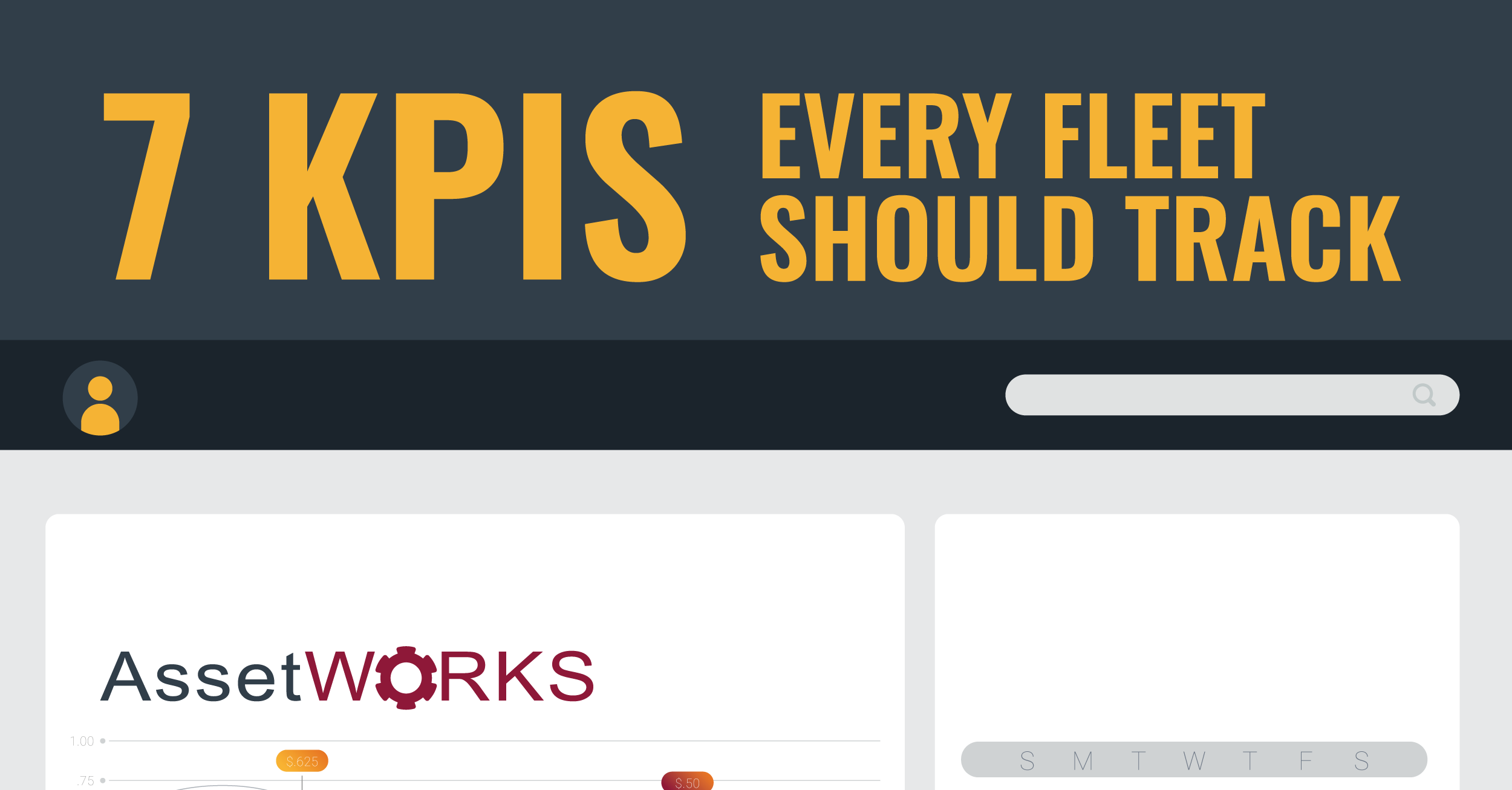Efficient fleet management is integral to reducing costs, improving uptime, and ensuring compliance. However, without the right fleet software integrations, managers can miss critical opportunities to streamline operations and make data-driven decisions. Modern fleets require interconnected systems that provide a unified view of operations, empowering managers to optimize workflows and maximize output.
This blog lists the most important software integrations your fleet might be missing and explores how each of them can unlock significant cost savings, boost efficiency, and enhance compliance. These fleet software integrations ensure your fleet is equipped to handle the challenges of the modern transportation industry.
Maintenance Management
A robust maintenance management system is the backbone of a well-run fleet. When integrated with your fleet management software, it centralizes service history, inspection records, and maintenance schedules. Managers can automate preventative maintenance, reducing downtime caused by unexpected breakdowns and costly emergency repairs.
Automated scheduling helps ensure that maintenance is done at the right time, extending the lifespan of vehicles through proactive repairs. By tracking repair expenses, businesses gain better cost visibility, making it easier to budget and identify high-cost trends. Centralized data further simplifies operations by providing managers with a single interface for inspection checklists and service reports, reducing the risk of manual errors.
Actionable Tip: Integrate maintenance tools to create predictive maintenance models. By analyzing historical data, you can identify recurring issues and address them before they escalate.
Fuel Management
Fuel expenses often represent the largest operational cost for fleets. Without an integrated fuel management system, tracking usage and identifying inefficiencies can be a daunting task. Integration allows for real-time fuel tracking, providing detailed analytics on consumption, waste, and potential issues like theft.
Fuel optimization also helps identify inefficient routes or vehicles with excessive idle times, reducing waste and improving efficiency. By monitoring emissions and adopting eco-friendly practices, businesses can also meet sustainability goals. Additionally, cost savings are achieved through the immediate detection of anomalies like unauthorized fuel purchases or leaks, minimizing unnecessary expenses.
Actionable Tip: Leverage fuel integration analytics to monitor driver habits, such as harsh braking or rapid acceleration, as they can significantly impact fuel economy.
Parts & Inventory Management
Fleet downtime can often be traced to poor inventory management. Integrated inventory systems, especially those using ABC analysis, ensure high-value items are always available while minimizing time spent on low-priority stock. Having an automated system eliminates human error and staffing costs while also preventing delays caused by missing parts.
Effective inventory control means prioritizing critical parts while maintaining optimal stock levels without overloading storage. This approach promotes cost efficiency by avoiding unnecessary bulk purchases and identifying trends in part usage over time. Additionally, streamlined procurement is achieved through automated stock alerts, ensuring timely ordering and preventing supply chain disruptions.
Actionable Tip: Implement real-time tracking of spare parts usage across all branches in your fleet. This helps identify parts with the highest turnover and ensures their accessibility at key locations.
Motor Pool Management
Motor pools provide a flexible vehicle allocation solution, but manual management of reservations and usage can lead to inefficiencies. Integrated motor pool management tools automate vehicle reservations, availability notifications, billing, and dispatch, ensuring seamless operations.
Improved utilization ensures maximum vehicle availability by reducing idle rates and unnecessary downtime. With 24/7 access through automated systems, customers can reserve and access vehicles anytime, minimizing administrative overhead. Additionally, streamlined billing with accurate tracking allows for proper allocation of costs to departments or projects.
Actionable Tip: Enable real-time updates on vehicle malfunction statuses within the motor pool system. This ensures only roadworthy vehicles are available for reservation, reducing safety risks.
GPS & Telematics Integration
Telematics technology provides critical insights into vehicle and driver performance, but its true potential is unlocked when integrated with your fleet management software. Monitoring key metrics such as speed, harsh braking, and idle time allows for optimizing operations and improving safety.
Modern telematics systems with GPS dashcams enhance safety by detecting unsafe driver behavior and offering real-time coaching opportunities. Dual-facing AI cameras provide valuable insights by capturing both driver behavior and road conditions for review. These systems also deliver operational insight through continuous engine diagnostics, helping to prevent mechanical failures. Additionally, addressing driver habits such as speeding or idling can lead to significant cost savings by reducing fuel consumption and minimizing wear-and-tear on vehicles.
Actionable Tip: Set up automatic notifications within your telematics system for critical safety events, such as harsh braking or excessive speeding, to address issues in real-time.
Compliance and Reporting
Staying compliant with regulations like DOT and FMCSA requirements can be time-consuming. Integrated compliance tools simplify the process by automating inspection checklists, maintenance logs, and reporting.
Time-saving automation allows you to generate compliance documents automatically, streamlining operations and removing the hassle of manual data collection. This means your team can focus on more critical tasks instead of spending hours on paperwork. Digital logs further enhance efficiency by reducing the risk of errors, ensuring all records are accurate, complete, and easy to access whenever needed. These logs also improve transparency by creating a clear, organized history of compliance activities. Additionally, integrated systems stay up-to-date with evolving regulations, automatically adjusting to new requirements, so your fleet remains compliant at all times without the added stress of constant monitoring.
Actionable Tip: Use compliance integrations to generate audit-ready reports, saving time and resources during inspections.
Mobile Solutions
With fleet employees constantly on the move, mobile-responsive tools are essential. Integrating mobile capabilities into fleet management systems allows staff to perform key tasks, like updating vehicle statuses or viewing maintenance schedules, directly from their devices.
With improved accessibility, users can access data anytime, whether on the road or the shop floor, enhancing communication across teams. Technicians no longer need to wait in line to update tasks on a shared computer. Reduced downtime is achieved through quick updates on vehicle availability and issues, ensuring smoother operations. Additionally, employee empowerment is fostered as drivers and technicians can input real-time data, boosting the accuracy of records and overall efficiency.
Actionable Tip: Ensure mobile solutions support offline functionality to guarantee usability in areas with limited connectivity.
Why These Integrations Matter
Fleet software integrations are no longer optional, they’re critical tools for staying competitive. The benefits of these integrations go beyond cost savings or compliance, they empower fleet managers with real-time data to make smarter, faster decisions. To begin the transition to a fully integrated fleet management system, you can start by completing the following steps.
Next Steps
- Evaluate your current fleet management software for integration capabilities.
- Prioritize the integrations discussed here based on your fleet’s specific needs.
- Partner with vendors that offer seamless, scalable integration options.
- Train your team on how to effectively use the integrated tools to maximize their benefits.
- Regularly review and update your integrations to ensure they continue to meet your changing business needs.
- Leverage data from different integrated systems to gain better insights into your fleet’s performance and make informed decisions for future growth.
- Consider investing in custom integrations tailored specifically for your fleet’s unique requirements.
- Stay up-to-date with new advancements in the industry to identify additional integration opportunities that could further improve your operations.
Effective integration creates a unified ecosystem where every component, from maintenance scheduling to fuel management, works in tandem to improve operational efficiency. With the right approach, your fleet management system will evolve from a patchwork of tools into a streamlined, powerful platform that drives your business forward.












